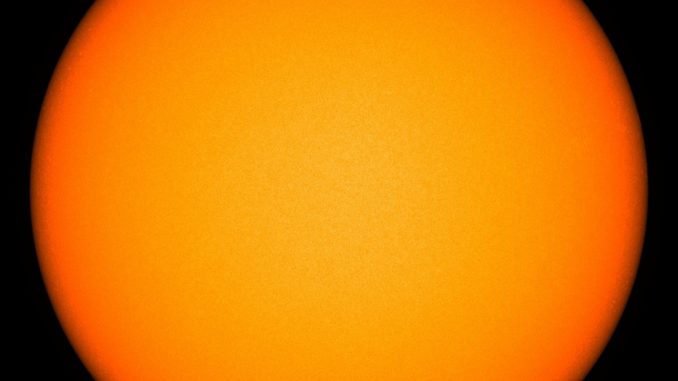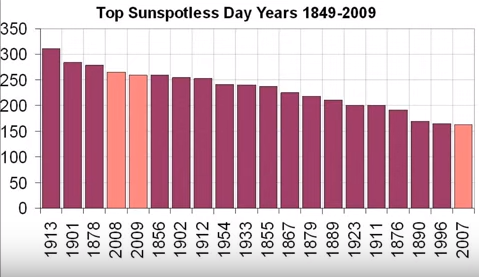
Scientists have expressed concern over the fact that the Sun has gone completely blank for the second time this month, something it hasn’t done for 100 years.
On June 4th the sun went completely ‘dark’ without any spots on visible, and has remained almost completely blank for the last few weeks.

BYPASS THE CENSORS
Sign up to get unfiltered news delivered straight to your inbox.
You can unsubscribe any time. By subscribing you agree to our Terms of Use
Latest Video
Vencoreweather.com reports:
The blank sun is a sign that the next solar minimum is approaching and there will be an increasing number of spotless days over the next few years.
At first, the blankness will stretch for just a few days at a time, then it’ll continue for weeks at a time, and finally it should last for months at a time when the sunspot cycle reaches its nadir. The next solar minimum phase is expected to take place around 2019 or 2020.
The current solar cycle is the 24th since 1755 when extensive recording of solar sunspot activity began and is the weakest in more than a century with the fewest sunspots since cycle 14 peaked in February 1906.
Solar cycle 24
The sun goes through a natural solar cycle approximately every 11 years. The cycle is marked by the increase and decrease of sunspots which are visible dark regions on the sun’s surface and cooler than surroundings. The greatest number of sunspots in any given solar cycle is designated as the “solar maximum” and the lowest number is referred to as the “solar minimum” phase. We are currently more than seven years into Solar Cycle 24 and it appears the solar maximum of this cycle was reached in April 2014 during a spike in activity (current location indicated by arrow). Going back to 1755, there have been only a few solar cycles in the previous 23 that have had a lower number of sunspots during its maximum phase. The peak of activity in April 2014 was actually a second peak in solar cycle 24 that surpassed the level of an earlier peak which occurred in March 2012. While many solar cycles are double-peaked, this is the first one in which the second peak in sunspot number was larger than the first peak. The sunspot number plot (above) shows a clear weakening trend in solar cycles since solar cycle 22 peaked around 1990.
While a weak solar cycle does suggest strong solar storms will occur less often than during stronger and more active cycles, it does not rule them out entirely. In fact, the famous “superstorm” known as the Carrington Event of 1859 occurred during a weak solar cycle (number 10). In addition, there is some evidence that most large events such as strong solar flares and significant geomagnetic storms tend to occur in the declining phase of the solar cycle. In other words, there is still a chance for significant solar activity in the months and years ahead. The last solar minimum phase lasted from 2007 to 2009 and it was historically weak. In fact, it produced three of the most spotless days on the sun since the middle 1800’s (bar graph below).

Consequences of a solar minimum
Contrary to popular belief, solar minimum is not a period of complete quiet and inactivity as it is associated with numerous interesting changes. First, cosmic rays surge into the inner solar system with relative ease during periods of solar minimum. Galactic cosmic rays coming from outside the solar system must propagate upstream against the solar wind and a thicket of solar magnetic fields. Solar wind decreases and sun’s magnetic field weakens during solar minimums making it easier for cosmic rays to reach the Earth. This is a more dangerous time for astronauts as the increase in potent cosmic rays can easily shatter a strand of human DNA. Also, during years of lower sunspot number, the sun’s extreme ultraviolet radiation (EUV) drops and the Earth’s upper atmosphere cools and contracts. With sharply lower aerodynamic drag, satellites have less trouble staying in orbit— a good thing. On the other hand, space junk tends to accumulate, making the space around Earth a more dangerous place for astronauts.


